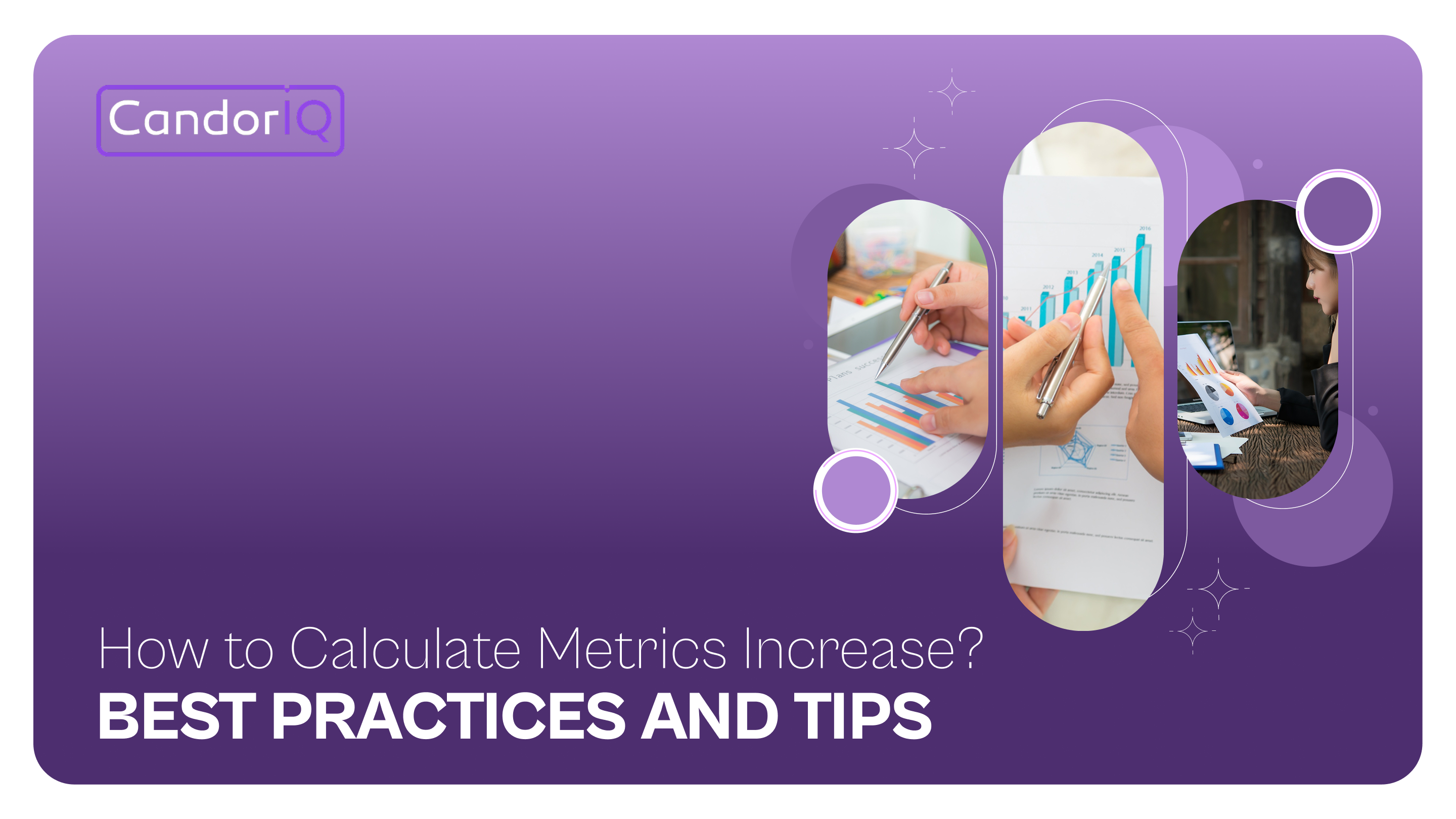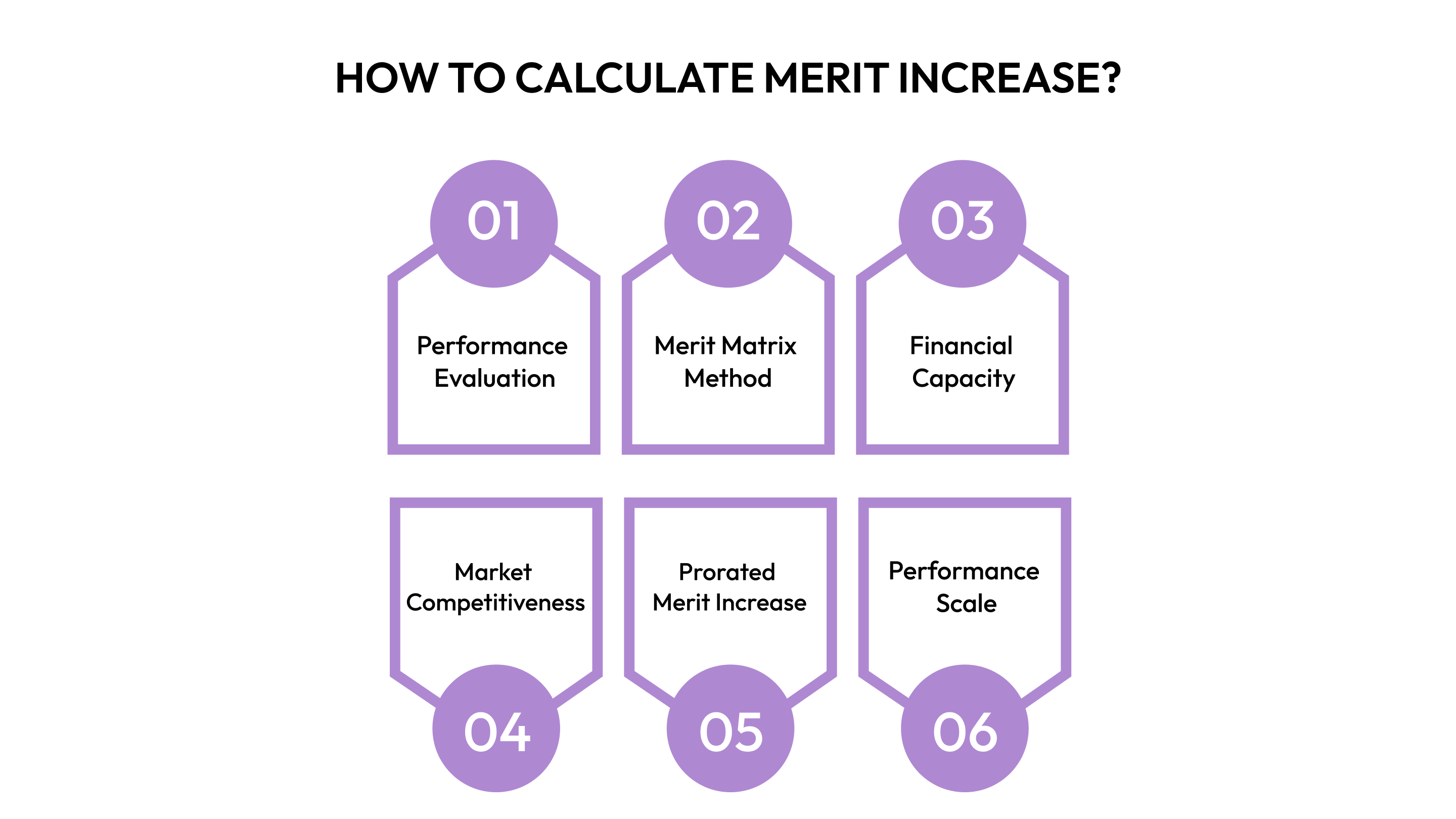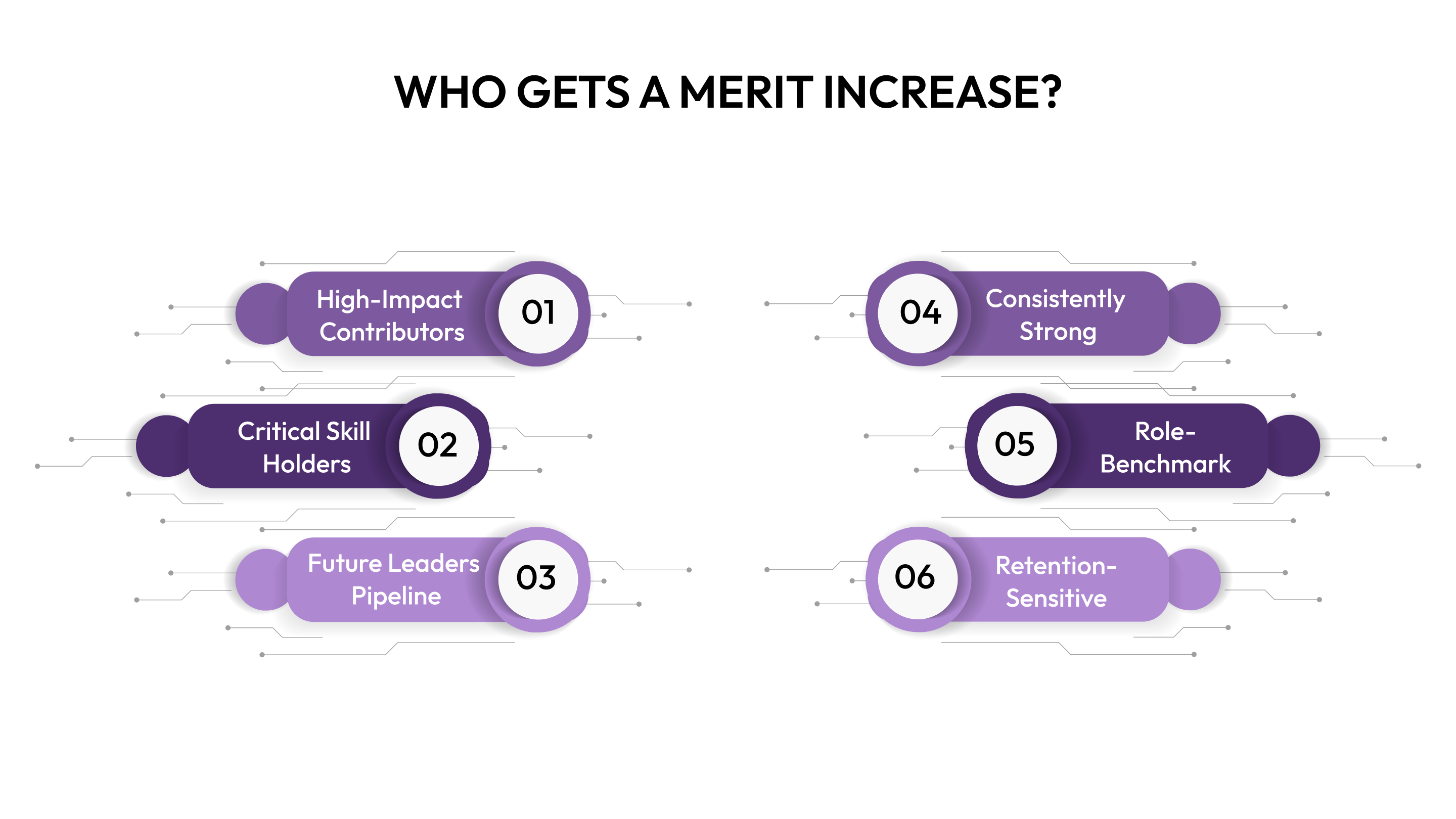How to Calculate Merit Increase: Proven Methods and Best Tips 2025
Discover how to calculate merit increase with practical methods and expert tips built for growth-stage companies balancing budgets, retention, and fairness.

Every growth-stage company runs into the same friction during review season. Teams want to reward top performers fairly, but budgets are not unlimited, and finance leaders feel the strain. HR ends up stuck in the middle, trying to make sure raises feel meaningful without tipping payroll into red territory.
The real question becomes how to calculate metrics increase in a way that feels fair for employees and sustainable for the business. Merit pay increases averaged nearly 3.3% in 2024, which means even small missteps can ripple across retention, morale, and future hiring costs. Leaders know this is not just a math exercise; it is about keeping trust across distributed teams while still protecting growth targets.
In this guide, we will look at how to calculate metrics increase step by step and share practical tips companies can actually apply.
Key Takeaways
- Merit tied to outcomes: Merit increases work best when linked directly to measurable results like ARR growth, retention gains, or product adoption, not just tenure or general performance.
- Matrix-driven fairness: A merit matrix prevents pay inflation at higher bands by structuring increases based on both performance ratings and current compa-ratio or pay position.
- Budget as guardrail: Financial capacity must set the upper limit, with reforecasting each quarter to keep merit pools aligned with shifting revenue and margin realities.
- Compression monitoring: Regularly review pay bands to avoid high performers in lower levels surpassing peers in senior levels, preserving internal equity and career progression signals.
- Retention-focused allocation: Functions with higher turnover costs, like quota-carrying sales or compliance-heavy roles, should be prioritized in merit distribution to prevent attrition from undermining growth.
What is Merit Increase?
A merit increase is a pay adjustment granted to employees based on performance outcomes, contribution impact, and value creation, rather than tenure or across-the-board adjustments. It links compensation directly to measurable achievements and aligns salary growth with business priorities.
Why Merit Increases Are Important

Here’s why they matter most for organizations balancing scale with discipline:
- Performance Differentiation: Merit increases allow leaders to reward high performers distinctly, preventing a flat pay structure that fails to recognize varied contributions across distributed teams.
- Budget Precision: They support finance leaders by concentrating limited salary budgets on employees with measurable impact, giving better predictability for growth-stage companies managing cash burn.
- Retention Advantage: By rewarding those driving product adoption or revenue growth, merit increases reduce flight risk among high-impact employees in competitive SaaS and fintech labor markets.
- Cultural Signal: Merit-based pay sends a message that impact and outcomes matter, reinforcing accountability across remote-first teams where visibility of performance may otherwise be uneven.
- Comp Planning Structure: They bring consistency and transparency to annual pay reviews, which is particularly valuable for lean HR teams scaling from 50 to 5,000 employees.
- Market Competitiveness: By tying raises to contribution, companies can remain competitive with peers in e-commerce and services sectors, while avoiding inflated across-the-board pay inflation.
Because merit increases carry weight in culture, retention, and budget discipline, the next step is understanding how to calculate merit increases in a structured way.
How to Calculate Merit Increase?

Figuring out how to calculate merit increase can’t be left to guesswork for companies under pressure to grow responsibly. Each approach comes with trade-offs, and the right fit depends on how your teams measure performance, manage budgets, and compete for talent.
Below are the most widely used methods, paired with best practices that keep them practical and grounded in real company needs:
1. Performance Evaluation Method
Link salary increases directly to performance appraisal results, rewarding measurable impact in product, revenue, or customer outcomes. Raises scale with performance ratings.
Best practices:
- Tie to measurable outcomes: Anchor ratings in hard metrics (Annual recurring revenue growth, client retention, product delivery) to reduce subjectivity.
- Manager calibration sessions: Hold cross-team reviews to prevent rating inflation or inconsistent scoring across distributed offices.
- Connect to growth cycles: Adjust performance period criteria to match company growth phases, quarterly in high-growth, annual in more stable phases.
Example: An account executive rated “Exceeds” gets a 5% raise while “Meets” receives 3%, linking the percentage directly to performance scores.
2. Merit Matrix Method
Use a two-axis grid combining performance levels with pay band position, where each cell specifies a recommended raise percentage.
Best practices:
- Segment pay bands: Define ranges (below midpoint, at midpoint, above midpoint) to prevent high earners from receiving disproportionate increases.
- Limit overrides: Keep manager discretion under 10% of cases to avoid eroding consistency.
- Model budget scenarios: Test how different performance distributions through the matrix impact the overall merit pool.
Example: An engineer at 85% of the midpoint with “Exceeds” rating gets 6% increase, while one at 110% midpoint with the same rating receives 3%.
3. Financial Capacity Method
Calculate total salary budget available for merit increases, then distribute proportionally across departments, factoring in revenue forecasts and margin targets.
Best practices:
- Finance-HR partnership: Collaborate early with finance leaders to set a merit pool aligned with cash flow realities.
- Prioritize critical roles: Direct higher increases to roles driving customer adoption, revenue, or compliance.
- Reforecast quarterly: Adjust the pool if revenue growth shifts, keeping spend within guardrails.
Example: A $500k merit pool is distributed proportionally across departments, with sales and engineering receiving higher shares based on revenue impact and customer retention needs.
4. Market Competitiveness Method
Benchmark employee salaries against market data, adjusting merit increases to close gaps while still rewarding strong performance.
Best practices:
- Reliable survey data: Use trusted compensation surveys specific to SaaS, fintech, or e-commerce, not generic labor market averages.
- Identify high-risk roles: Focus adjustments where attrition costs would damage revenue or compliance timelines.
- Blend with performance: Don’t give market corrections in isolation; tie them to performance to reinforce contribution impact.
Example: A senior developer paid 15% below market midpoint with a strong performance rating receives a 7% raise to close the gap.
5. Prorated Merit Increase
For employees who joined mid-cycle or have partial eligibility, adjust the full merit amount proportionally to the time worked.
Best practices:
- Calculate precise pro rata factor: Use days or weeks in the review period to derive a fraction (e.g., 9/12).
- Apply raise in a separate step: First compute full merit, then multiply by the pro rata factor, to avoid rounding bias.
- Document eligibility cutoffs: Define a threshold (e.g., employed at least 3 months) below which a prorated raise is zero.
Example: A new hire eligible for 12 months of review but only employed for 9 months receives 75% of the full merit increase.
6. Tiered Bands with Performance Scale
Define fixed tiers of raise ranges by role groups or levels (e.g., IC1, IC2) and then adjust within those tiers based on performance.
Best practices:
- Role-level guardrails: Establish default ranges per role level to bound raises before performance is factored.
- Relative adjustment: Within each tier, translate performance rating into a point within that range (e.g., 50–100 basis points).
- Review compression risks: Regularly check that top performers in lower tiers do not exceed those in higher tiers prematurely.
Example: IC1 employees may receive 2–4% increases, while IC2 employees may receive between 3–6%. A top performer in IC1 gets 4%, capped below IC2 minimums.
After outlining the approaches for calculating merit increases, the focus shifts to identifying the employees who typically benefit from these adjustments.

You might find this interesting: How to Effectively Plan Merit Increases and Bonuses in a Tight Budget Environment.
Who Gets a Merit Increase?

When merit budgets get approved, leaders need more than broad categories to decide where the money goes. Raises should land where they protect revenue, strengthen retention, or correct pay gaps that create risk.
Here are the groups most often prioritized for merit increases.
- High-impact contributors: Employees exceeding role expectations by driving measurable outcomes, such as revenue growth, employee retention improvement, or product adoption acceleration, are prime candidates for merit increases.
- Critical skill holders: Staff in scarce technical or compliance roles where attrition risk threatens business continuity often receive merit increases tied to both contribution and market scarcity.
- Future leaders pipeline: High-potential individuals on succession tracks who demonstrate capacity for broader scope responsibilities frequently receive targeted merit increases to secure long-term retention.
- Consistently strong performers: Employees delivering reliable above-average results across multiple review cycles, not just one-off peaks, are often rewarded to reinforce sustained contribution.
- Role-benchmark outliers: Individuals significantly below market midpoint for their level, yet performing strongly, may receive merit increases to correct compression while recognizing contribution impact.
- Retention-sensitive groups: Employees in functions with historically higher turnover costs, such as quota-carrying sales or revenue operations, may receive priority within merit allocations.
Knowing who usually receives a merit increase is only part of the equation; the bigger challenge is applying it in ways that make the program effective company-wide.
Best Tips to Make Merit Increase Work for an Organization

Raises are one of the clearest signals a company sends to its people, and employees can tell when the process feels rushed or inconsistent. Merit increases work best when guided by practices that connect pay to contribution, protect fairness across teams, and support long-term retention.
Here are practical ways to make them effective.
- Link to company metrics: Anchor merit budgets to revenue, margin, or ARR growth to keep salary increases aligned with financial capacity and board-level priorities.
- Create a merit matrix: Use a structured grid of performance levels and pay positions to avoid bias while maintaining consistent merit distribution across teams and roles.
- Communicate eligibility rules: Publish clear guidelines on who qualifies for merit increases to reduce manager discretion and prevent inconsistent or arbitrary application across departments.
- Monitor pay compression: Review whether high performers in lower bands are catching up to peers in higher bands and adjust to maintain meaningful differentiation.
- Audit manager decisions: Require HR or finance review of outliers to reduce favoritism risk and maintain credibility across distributed teams and remote offices.
- Model retention risks: Prioritize merit allocations for roles where attrition costs threaten revenue continuity or compliance obligations, particularly in SaaS engineering and quota-carrying sales.
- Revisit annually: Refresh salary ranges, performance criteria, and merit allocation models each year to reflect market shifts and internal growth stages accurately.
If your team is ready to bring structure and clarity to compensation planning, start by learning what really works when Navigating Merit Cycles.
What Makes CandorIQ the Right Platform for Calculating Merit Increases at Scale
Working out how to calculate merit increase is only the starting point. The harder part is applying it fairly across roles and departments. CandorIQ gives growth-stage companies the structure to link pay decisions with performance while keeping finance, HR, and leadership on the same page.
Key Features
- Data-driven insights: Analytics that link performance to pay, helping teams move past guesswork and design raises that fit budget realities.
- Tools for visibility: Clear structures for levels, bands, and career ladders so compensation conversations stay consistent company-wide.
- Supporting equity: Built-in checks to spot pay compression, retention risks, and fairness gaps before they create attrition problems.
- Customizable transparency: Flexible settings to define how compensation details are shared, adapted to culture and growth stage.
Conclusion
Balancing recognition and budget control rarely feels straightforward, and most scaling companies underestimate how much clarity in compensation impacts retention and trust. The shift from reactive raises to structured strategies takes effort, but it pays back in stronger alignment between performance and growth. That is why learning how to calculate metrics increase with intention is so important for mid-sized, fast-growing teams.
This is where CandorIQ helps. Our platform consolidates multiple tools into a unified system from compensation planning from merit cycles to equity tracking and budget forecasting, giving finance and HR a single source of truth.

Ready to see how to calculate metrics increase without spreadsheet chaos? Book your demo today.
FAQs About How to Calculate Merit Increase
1. Does merit increase apply to employees on probation?
Usually no. Most companies set eligibility thresholds, like completing at least three to six months before qualifying for merit consideration.
2. How do promotions affect merit increases?
Promotions and merit raises are separate. Many firms provide only the promotion adjustment during that cycle to prevent double increases, inflating pay bands.
3. Can contractors or temporary staff receive merit increases?
Typically not. Merit increases are tied to base salary structures, which contractors or temporary workers fall outside of.
4. What happens if someone is already above their salary band midpoint?
Raises are smaller or sometimes converted into one-time bonuses to prevent compression above band limits.
5. Are merit increases ever prorated?
Yes. Employees who joined mid-cycle often receive prorated increases based on their time eligible within the review period.


